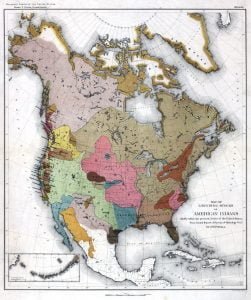Utina Indians
Utina Indians or Timucua Indians. The first name, which probably refers to the chief and means “powerful,” is perhaps originally from uti, “earth,” while the second name, Timucua, is that from which the linguistic stock, or rather this Muskhogean subdivision of it, has received its name. Utina Connections. As given above. Utina Location. The territory of the Utina seems to have extended from the Suwannee to the St. Johns and even eastward of the latter, though some of the subdivisions given should be rated as independent tribes. (See Timucua under Georgia.) Utina Towns Laudonniere (1586) states that there were more … Read more


